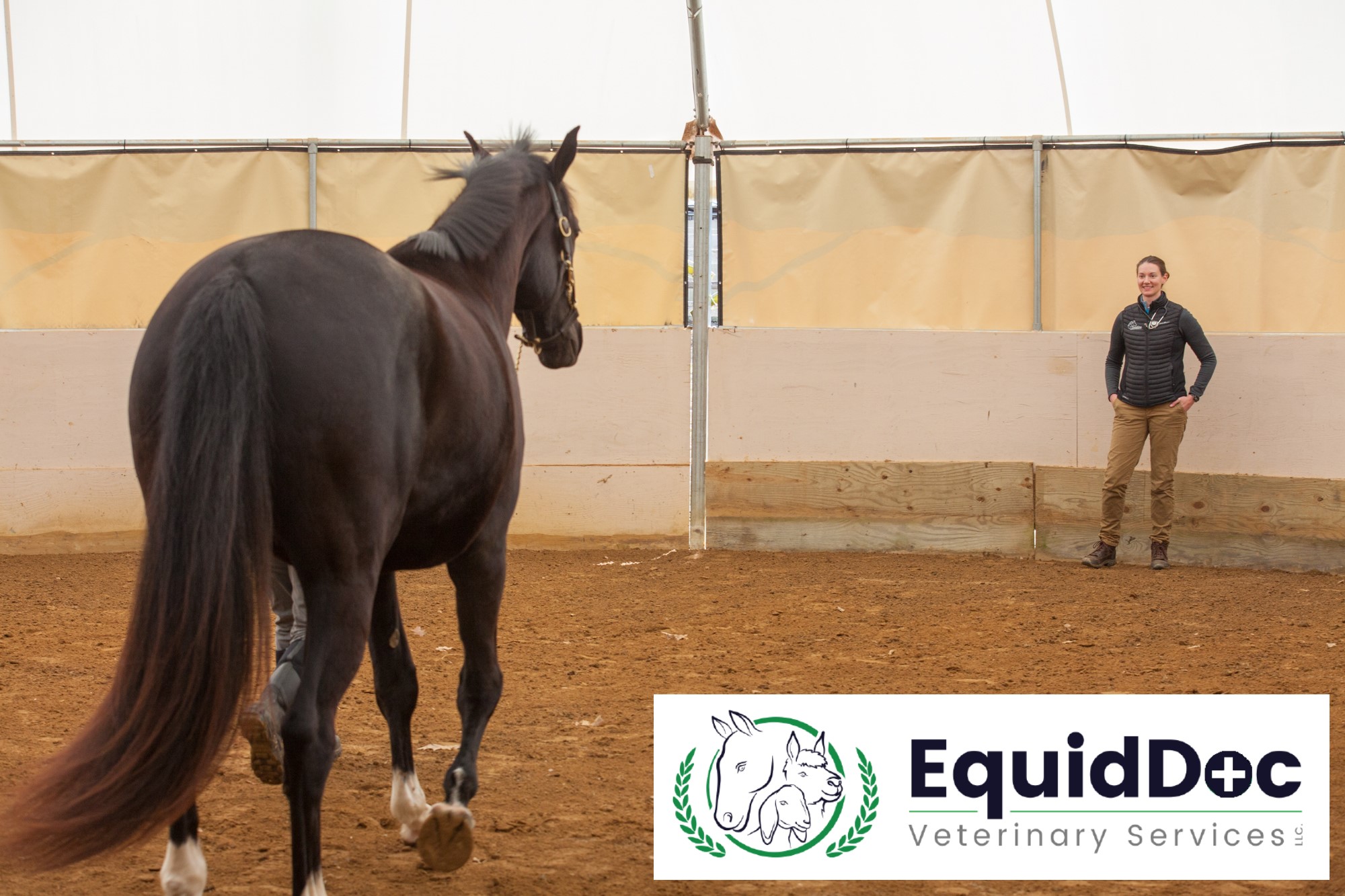EquidDoc is excited to offer new therapeutics in 2021 for the treatment of your horse’s lameness and performance issues. Pro-Stride and PRP (platelet-rich plasma) are now available for our use and allow us to move beyond the more traditional tools of non-steroidal anti-inflammatories (NSAIDs) and steroid injections for joint pain, and stall rest for soft tissue injury. Although our traditional tools still apply in many cases, there is more scientific support for the use of regenerative biologic treatments in equine sports medicine. Both Pro-Stride and PRP have been used with impressive success in helping our horses’ tendons, ligaments, and joints recover from injury and degenerative processes such as osteoarthritis (OA).
Both Pro-Stride and PRP are harvested from your horse’s blood and processed to extract specific blood components. The processing procedure typically takes about 20-30 minutes and is conveniently performed on-farm. These blood components are concentrated into a small volume of what has been described as “anti-inflammatory soup”. This “soup” contains many natural anti-inflammatory proteins (cytokines & growth factors) that can be administered into joints or soft tissues to help fight inflammation and repair tissue or joints. These products are injected into the area of interest (joint or tendon) just like any other time we inject a joint.

While steroid injections can be very helpful in managing mild-moderate OA or cases of severe short-term inflammation, repeated use over time can lead to decreased joint health and cartilage breakdown. Steroids decrease inflammation through a complex physiologic cascade to make your horse feel more comfortable for anywhere from months to years. Unfortunately, steroids do not address or heal the underlying condition or joint environment. Pro-Stride and PRP affect inflammation differently, reducing the long-term risk of weak cartilage and improving joint health. For this reason, Pro-Stride is a preferred treatment in athletic horses that are injected once or twice a year for maintenance and competitive soundness. Pro-Stride can also be an important tool for treating sudden onset joint injuries or joints that have undergone surgical intervention.
On the opposite end of the spectrum, some horses have such severe OA that steroid injections only seem to relieve pain and lameness for a few weeks to a few months. For such cases, a regenerative biologic is preferred to asteroid to repair and improve the joint environment which hopefully reduces inflammation over time. Some of the older patients may also have underlying diseases like PPID (aka Equine Cushing’s disease) and are at risk of developing laminitis following joint injections with steroids. In these cases, even horses with controlled PPID, a steroid-free Prostride injection is a much safer alternative.
The role of PRP in sports medicine has most often been utilized to enhance the repair of soft tissues, such as tendons and ligaments, and now more recently it has been used as a joint treatment too. PRP concentrates the horse’s activated platelets that are then injected into the horse (into a hole in a tendon or inflamed joint). The platelets release growth factors that help increase the number of reparative cells made by the body. As always, the nature, severity, and chronicity of the injury will influence the recommended therapy for each horse. The concept of rest and controlled rehabilitation exercise still pertain to all cases of tendon and ligament injury but the use of these biologic therapies can help improve the injured structure more closely to its original strength and fiber alignment and could reduce the risk of re-injury in the future.
Wonder if Pro-Stride or PRP could benefit your horse? Call (508-885-4205) or Email (office@equiddocvet.com) EquidDoc to speak with one of our veterinarians or staff today!

